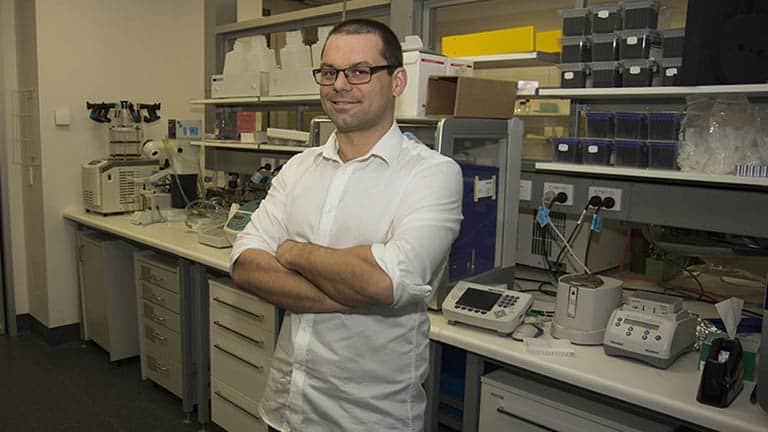
A new study, led by Jay Horvat, Associate Professor of Immunology and Microbiology at the University of Newcastle and HMRI Australia, is the first to show a relationship between iron build up in the lung cells and tissues and the severity of asthma.

A new study, led by Jay Horvat, Associate Professor of Immunology and Microbiology at the University of Newcastle and HMRI Australia, is the first to show a relationship between iron build up in the lung cells and tissues and the severity of asthma.
“Our organs and tissues need iron to support oxygen flow and normal enzyme activity,” Associate Professor Horvat explains.
“However, infections in the body also need iron to thrive. Our immune system has ways of hiding iron minerals in the body, where the infections cannot reach – but this can result in a build-up of iron in the cells and tissues of nearby organs.”
“We know that both high and low iron levels are reported in asthma, so we sought to investigate whether increased or decreased levels of iron makes the disease worse.”
By using a combination of patient samples and experimental models, the researchers were able to investigate irregular iron absorption into lung cells, and investigate the impact on the severity of asthma.
The results showed that lower iron levels outside of cells and higher iron levels within cells were associated with both lower lung function, and worse asthma.
“We believe that the immune system’s role in hiding iron minerals within the lung cells may be contributing to asthma’s severity,” Associate Professor Horvat says.
These findings offer great potential for the development of asthma treatments that target irregular iron absorption in the lung cells and tissues, and point to the need for further research into why this is occurring.
The team are now investigating ways to modify the iron storage process in lung cells and assessing whether it is possible to alter the number of cells that are responsible for iron absorption in this area. They hope to develop new approaches into therapies for asthma and other rare lung diseases such as idiopathic pulmonary fibrosis.
“We still know so little about how iron intake and the way the body regulates iron can affect iron levels in lung cells and lung tissues,” Associate Professor Horvat explains.
“We need to undertake more research to investigate the role and therapeutic use of iron in asthma, as targeted treatments, dietary iron or supplement use could lead to improved patient outcomes.”
This study was published in the European Respiratory Journal.
The study was partially funded by Cystic Fibrosis Australia and the Australian Cystic Fibrosis Trust, the University of Newcastle and HMRI.